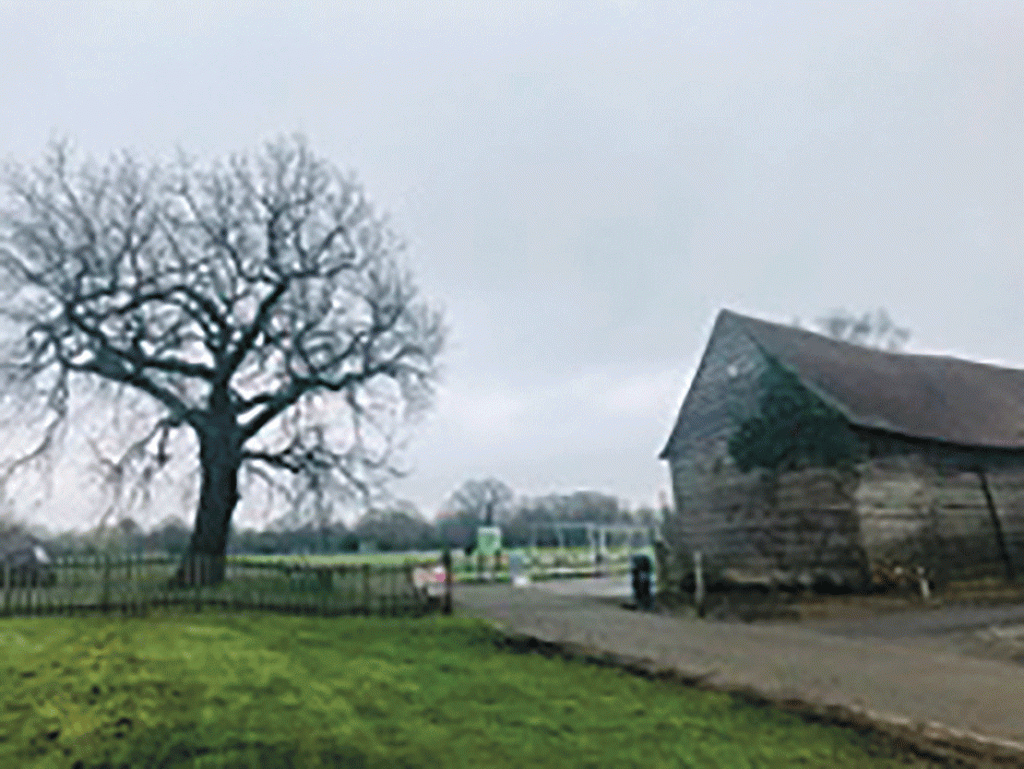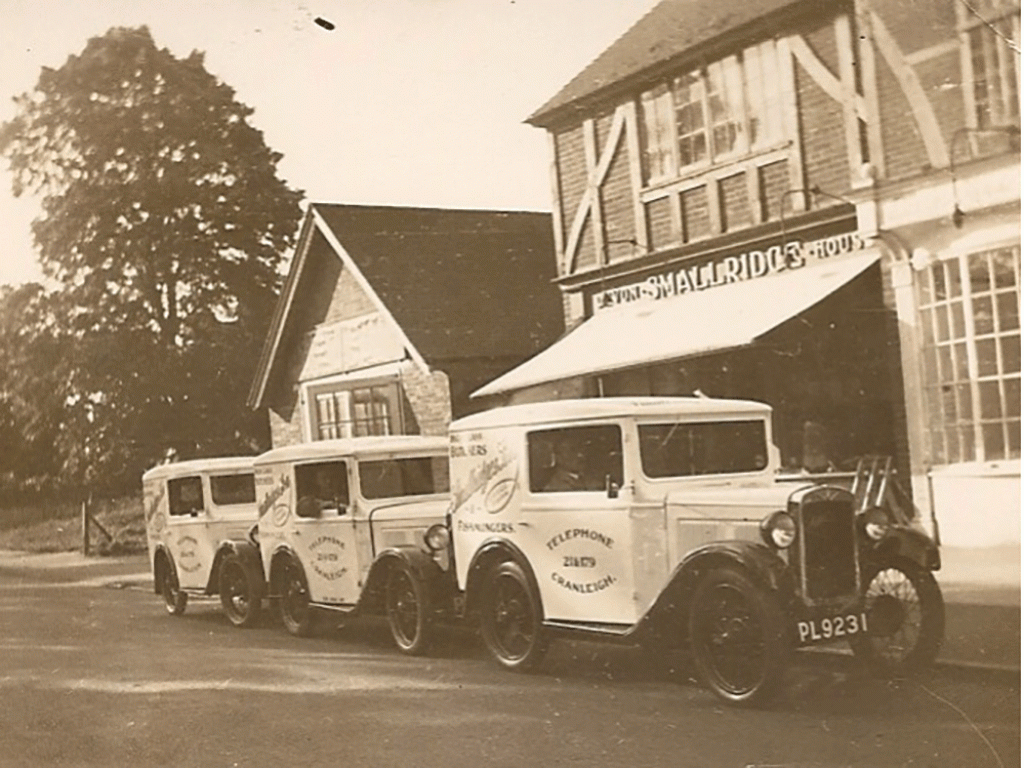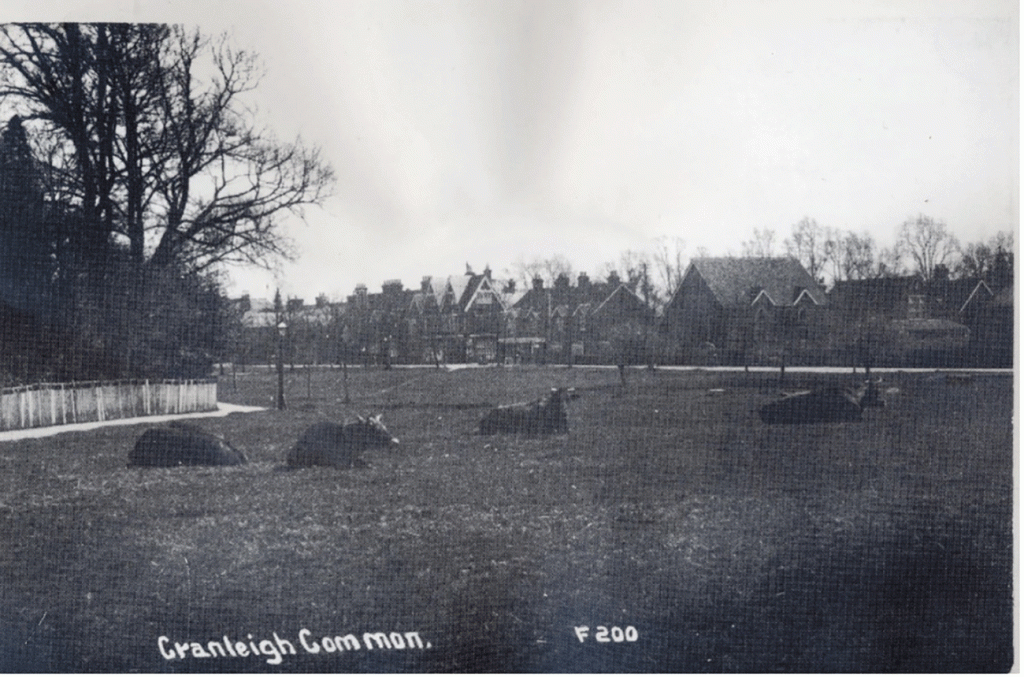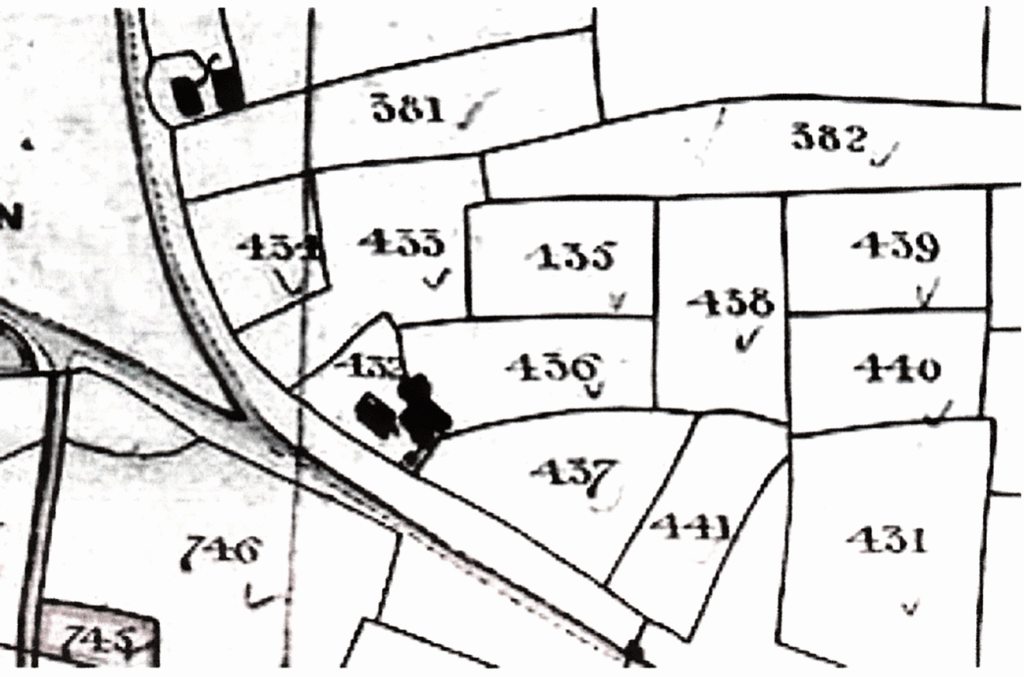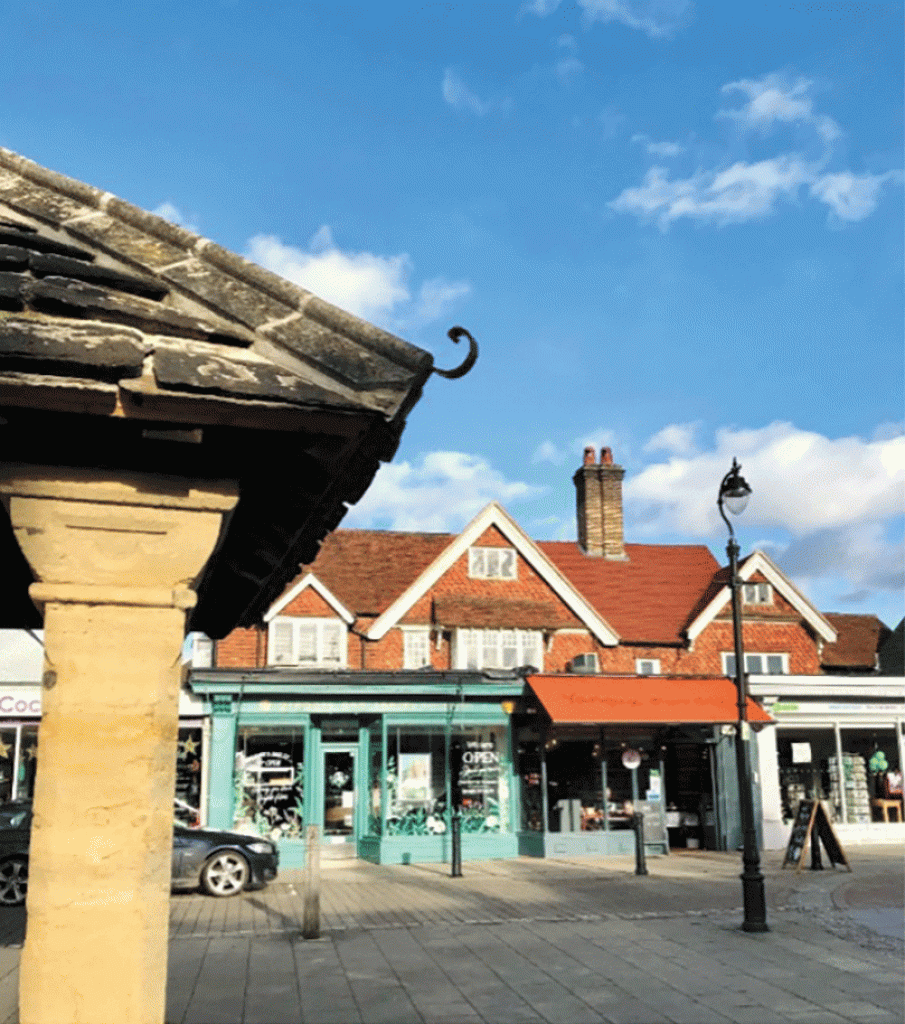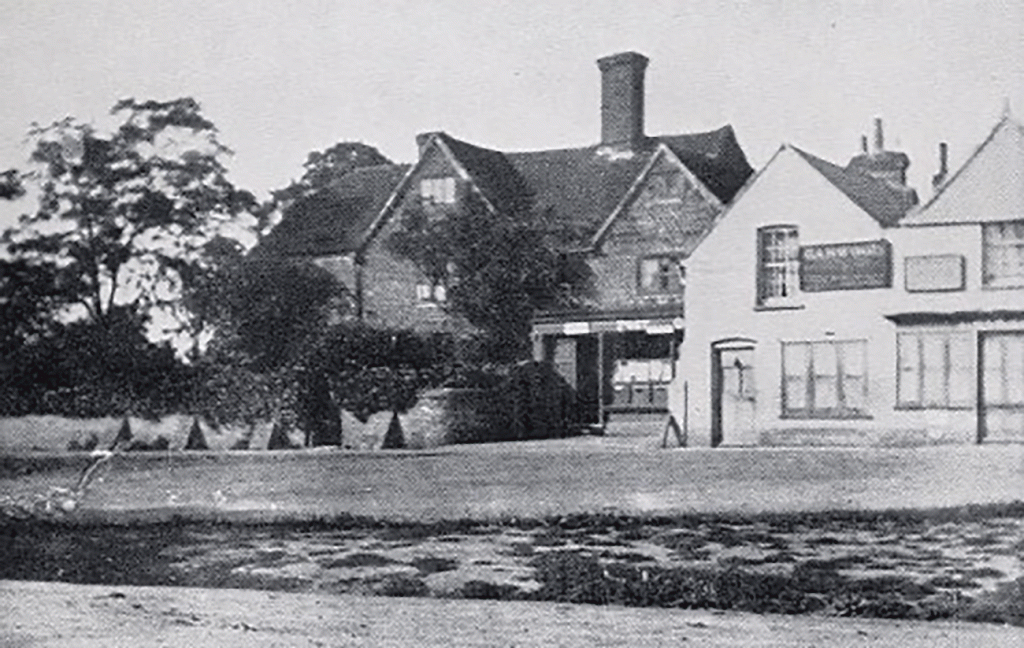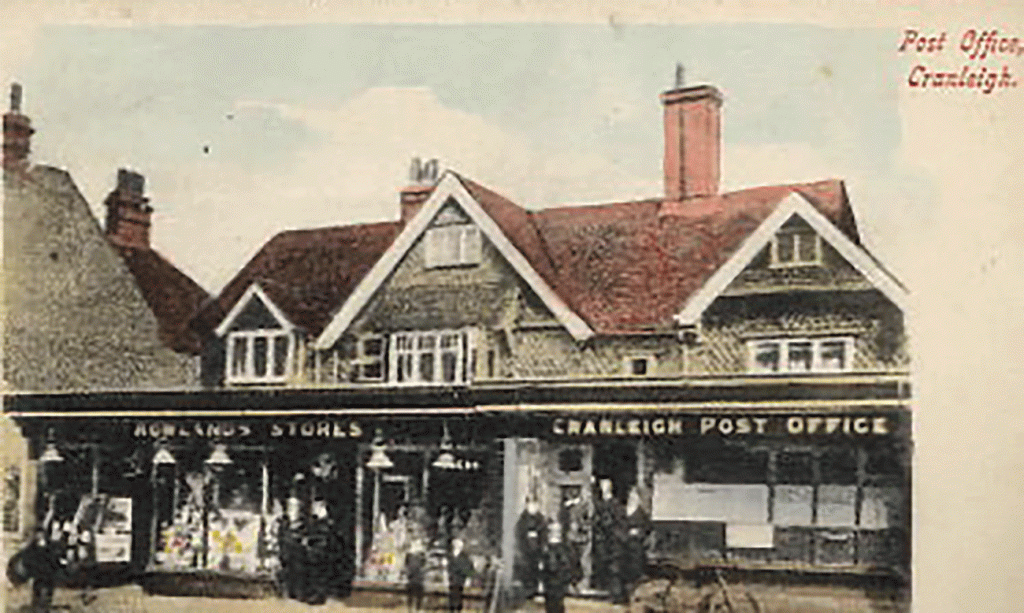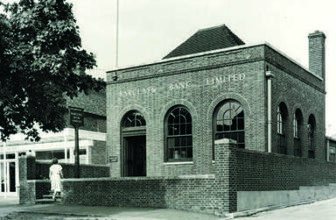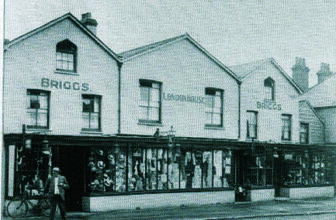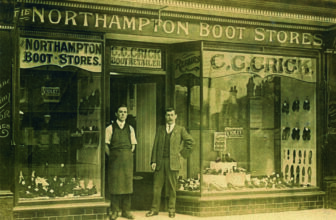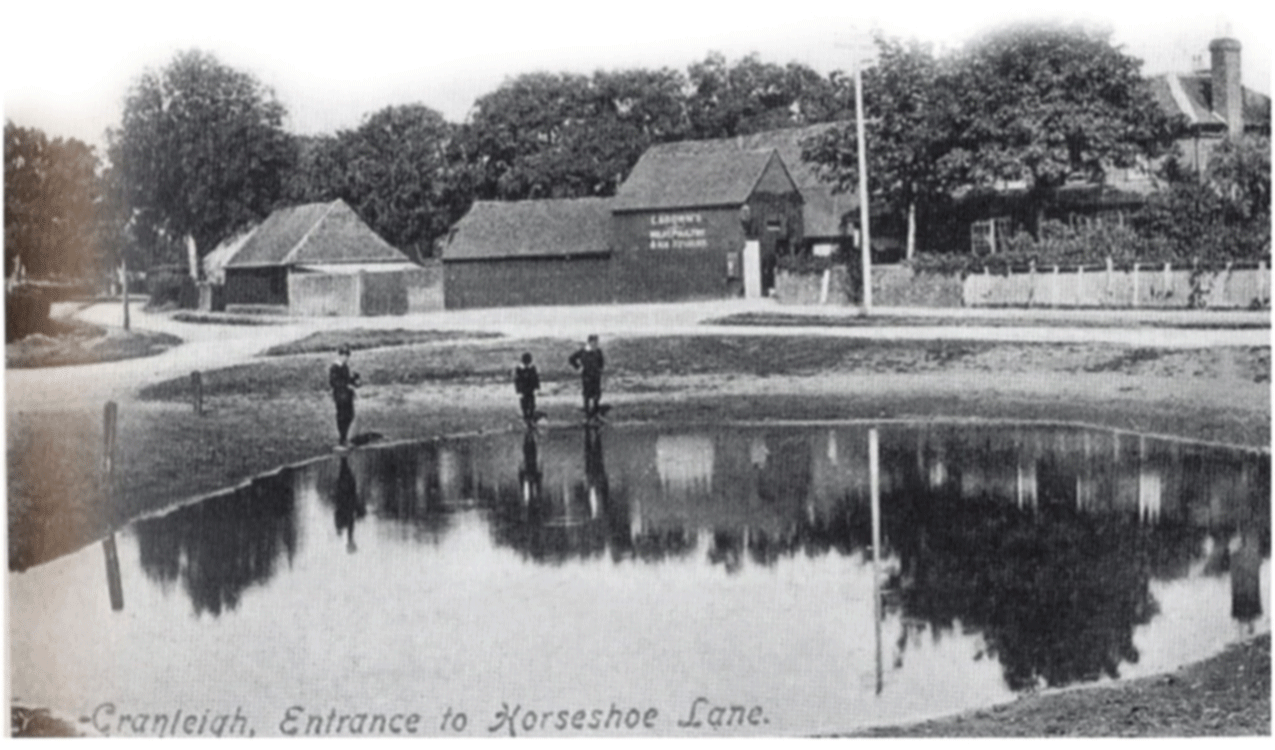
by Joy Horn
Main image – Common House Farm, when Edward Brown occupied it, around 1910-13. The pond is occasionally still called ‘Brown’s pond’.
We have all heard that Cranleigh used to be an agricultural village, with most of the population living on farms. We may not realise that we pass by old farmhouses even in the centre of the village, on a daily basis, probably not recognising them. This walk starts at the northernmost point of the Common, where Horseshoe Lane leaves it, and it proceeds to the centre of the village. It takes in three adjoining farms, and is about half a mile in length (level walking).
As you look up Horseshoe Lane, Common House Farm is on your right with High Hollicks adjoining it, at a right angle. They are both now houses of teachers at Cranleigh School. But in 1842 they formed the farmhouse and butcher’s shop of William Killick. Go 50 yards further up Horseshoe Lane and you will see on the right the farm’s ancient barn. The extensive playing fields are the pasture where the cattle grazed. Former farm buildings included two slaughter-houses, stalls for fifteen cows and a two-stall stable.
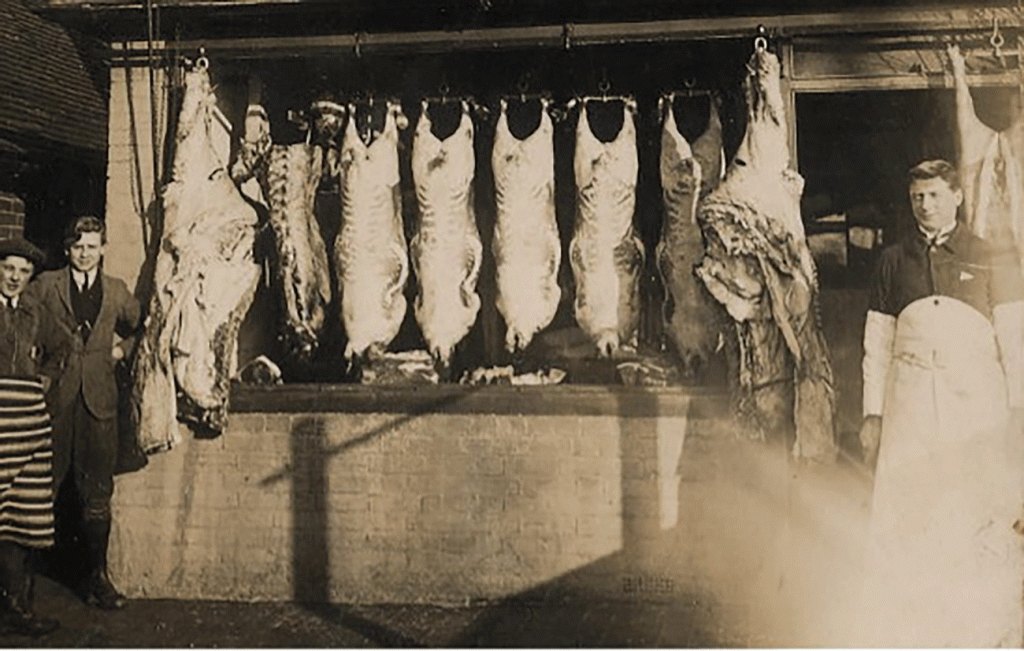
(courtesy of Stanley Thatcher’s son-in-law, Roy Pobgee)
The farm and its shop were still thriving in 1921, when the farmer, Tom Smallridge, died in his forties. Mrs Smallridge decided to move the butcher’s business and its staff into the village, and to sell the buildings and fields to Cranleigh School. She commissioned local architect Thomas Wade to design the new house and shop. It has remained an excellent butcher’s to the present, now known as Rawlings. A happy outcome was that Tom Smallridge’s grandson became a pupil at Cranleigh School: it would have pleased Tom that the boy played sport on the old farm fields.
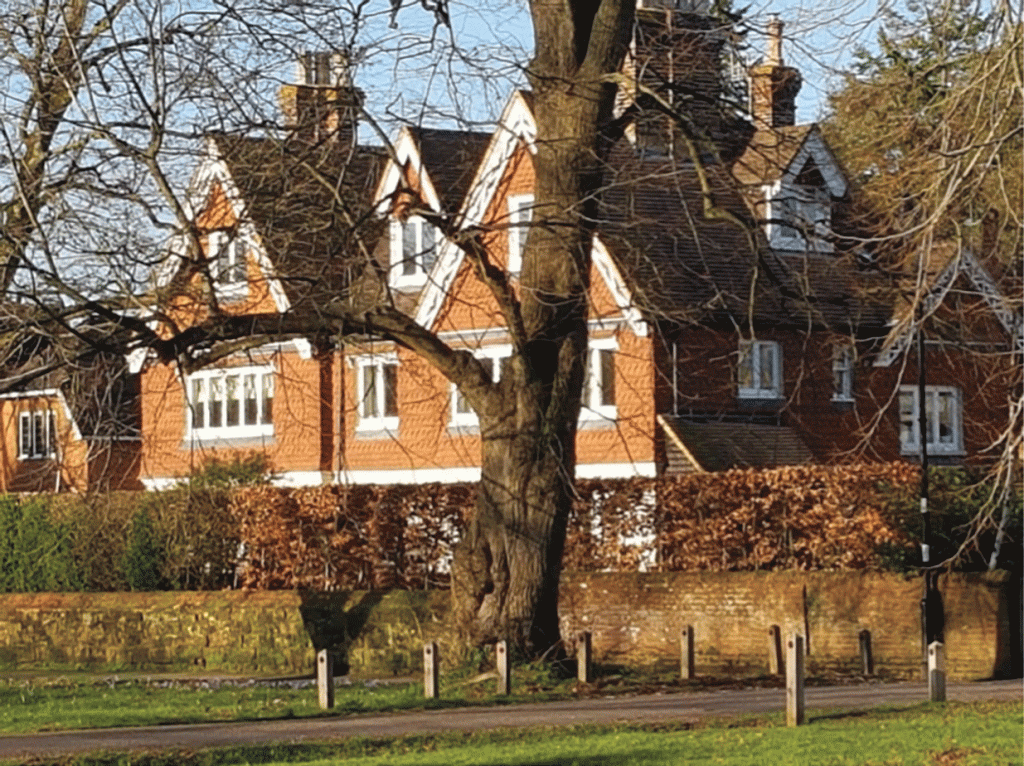
Follow the footpath south by the cricket ground until you reach Whiteoaks, which was previously Stonewall Farm (now considerably enlarged). An avenue of trees leads across the Common to its entrance.
The old map of 1842 shows Stonewall as a compact small farm (fields 432-40). The Censuses tell us the names of successive farmers, but by 1871 the house was owned by one Miss Harriet Johnson, 42, from London. She was living here on her own means, with a lady’s maid, cook, parlour-maid and a 15-year-old page – the only page I have ever come across in Cranleigh records! Of course, the land around it may still have been farmed, on lease. By 1882, William Welch had acquired it, and lived as a gentleman here. Gradually, large houses were built on Stonewall’s fields that faced the Common, including, in the 1930s, the large house called ‘Robin Rag’, named after the field on which it was built.
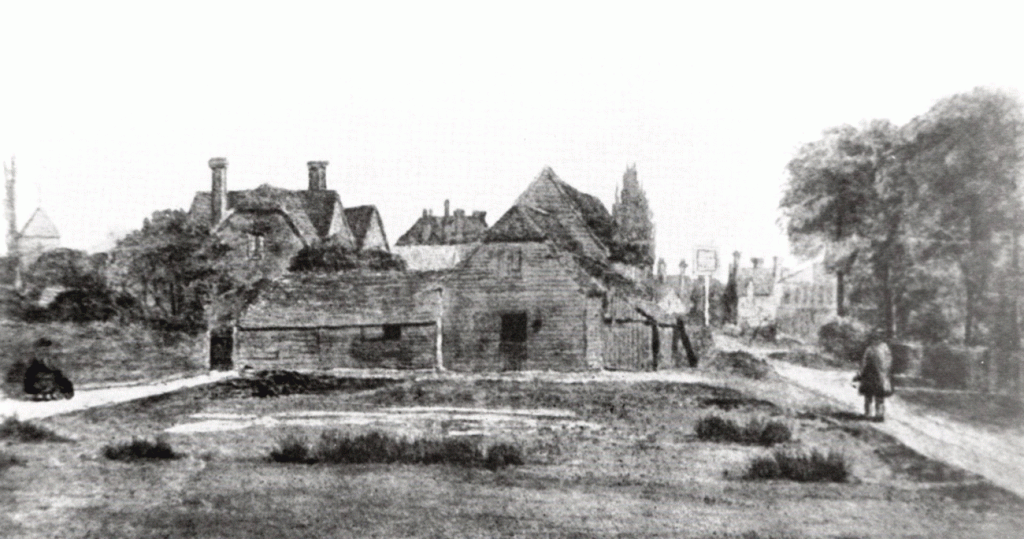
Continue along the Common into the village, passing the War Memorial, until you reach the Fountain. Behind the shops on the left, Cockerill’s to Oxfam, is the old farmhouse of Ivy Hall Farm, clearly visible from the High Street. Parts of this building date from around 1600. This farm’s Great Barn used to straddle the end of the Common, where the War Memorial is. The annual Cranleigh fair, held in June, with its stalls, pedlars, side-shows, music and dancing, was held in front of Ivy Hall farmhouse. In 1851 it was a small farm of fifteen acres, and in 1881 it was still a working farm, employing a man and a boy. However, the Great Barn was demolished in 1887 and by 1890 part of the farmhouse had become Cranleigh’s post office. The row of shops called Bank Buildings was built on Ivy Hall’s orchard in the 1890s.
The three old buildings to the east (currently vacant shops), with their gable-ends to the street, may have been wagon sheds for the farm. By the mid-nineteenth century they had all become workshops – for a harness-maker, a tailor and a shoemaker, respectively. By 1900, they were recognisable shops, and the farmhouse behind them was forgotten.
At least a dozen other former farmhouses can be seen scattered around Cranleigh.
The Cranleigh History Society meets on the second Thursday of each month at 8.00pm in the Band Room. The next meeting is on Thursday February 9th, when Desmond McCann will speak on ‘George Abbot and Abbot’s Hospital.’ Visitors are welcome.

